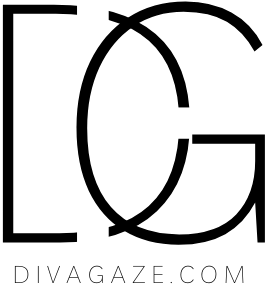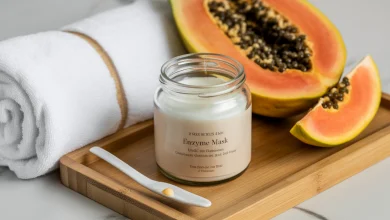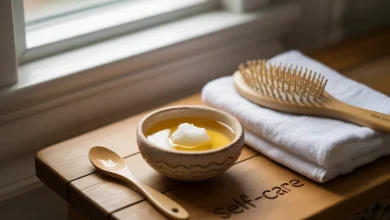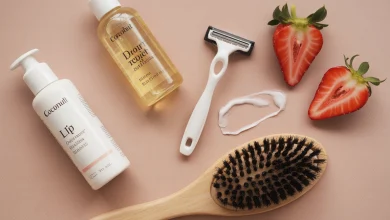How to Get Long Hair in 2025: Expert-Approved Tips That Actually Work
Did you know that over 65% of women in 2025 say that long and thick hair is their top beauty aspiration but so few ever make it? If you have had problems with your hair growth, well you are definitely not the only one on this journey.
From damage to the environment, bad nutrition and heating, hair growth can seem impossible. Too many people get caught up with trendy products or hacks that just don’t work, which leaves them frustrated and with less money in their wallet. There is an overwhelming number of miracle solutions for cosmetic needs in the beauty industry, but which ones can do the job?
This article is a decoding of the science of hair growth and providing practical solutions ranging from proven routines to essential nutrients for hair growth in the real world. Whether it’s hair loss as a result of child birth, thinning due to stress, or the desire of growing out a bad cut, we have you covered with tactics that deliver. Who will benefit from this article? Here there are real, long term solutions for women and men of any age, who are suffering from slow growth, thinning hair or damaged ends.
Why it is a Challenge to grow hair to lengths in 2025.
Environmental stress and modern lifestyles
Really, the truth is that our hair has more challenges than it ever before has had. Air pollution of urban spheres deposits harmful particles on the hair shafts making them weaker with time. Researches demonstrate that pollutants exposure may lead to the weakening of the hair tensile strength by 20%, making it susceptible to breakage before achieving long length.
Digital devices emit blue light, which is believed to interfere with the normal sleeping pattern, thus affecting the production of hormones and hair growth. Throw in the around-the-clock for which a lot of us live with constant stress levels to keep cortisol levels high (related to hair thinning and reduced growth).
The current diet, which is usually processed and lacking in essential nutrients, does nothing pretty much to our hair either. Hair follicles need certain vitamins, and minerals to work properly and many Americans are just not getting enough of those essential building blocks.
Mythen, die de Fortschritte verlangsamen
Beauty industry flourishes on lies, and there is no difference with such issues as hair growth. Let us burst some myths that may be acting as an impediment against you’s:
- Myth: Trimming hair makes it grow faster. Truth: Hair-cutting has no impacts on growth rate that occurs at the scalp. However, as a result of regular trimmings, split ends do not propagate in the hair shaft, hence reduced breakage.
- Myth: Washing hair every day prevents growth. Truth: The state of the scalp is important for the growth, and for some washing it every day keeps the conditions on the scalp in their best shape. Others may need less frequent washing—it’s individual.
- Myth: Expensive products are always better. Truth: A lot of high-end products have the same active ingredients as affordable ones. What is important is consistency and selecting the products for your needs in the hair.
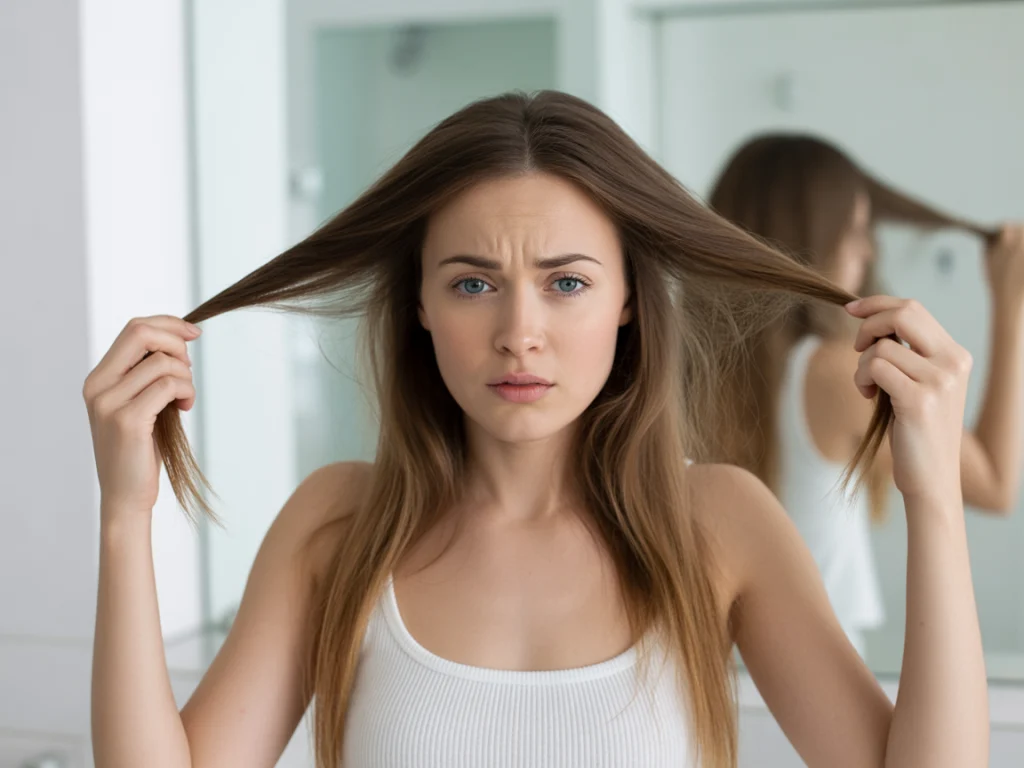
The Science of Hair Growth — What to Know about it.
An explanation of the hair growth phases ( anagen, catagen, telogen )
It is important to understand the cycle of hair growth if you are hoping to grow your hair as long as possible. Your hair goes through three distinct phases:
- Anagen (Growth Phase): This is when your hair is growing out of the follicle. This stage ranges from between 2 to 7 years, and defines your limit of hair length. A longer anagen phase also calls for longer hair growth.
- Catagen (Transition Phase): A very short stop in growth and shrunken follicle over a period of 2-3 weeks. Approximately 3% of all the hairs are in this stage at any one time.
- Telogen (Resting Phase): Lasting for approximately 3 months, this is the period when the hair is detached from the follicle and it shreds forming way for new growth. Around 10-15% of your hairs are in this phase.
What is amazing is that every follicle functions individually and hence we do not lose all hair at the same time. The research that is done nowadays presupposes that the anagen phase extension is paramount for longer hair and there are several factors under one’s control that can contribute to this.
How hormones and age impact on the growth of hair.
Your hair is not autonomous – it is a part of your body closely related to the level of your body’s hormonal balance. Estrogen, in general, helps in the growth of hair and thickens the hair, that is why most women realize that their hair will be at its best during pregnancy since estrogen levels are high. Conversely, the postpartum hormone crash often triggers increased shedding.
Hair growth patterns not only depends on thyroid hormones, testosterone but also on your respective stress hormone. Ageing, hormones are produced differently and most likely growth cycles are shortened – the anagen phase can decrease from 7 years in your 20’s to 3-4 years in your 50’s.
In addition, with advancing years, the diameter of hair strands also generally shrinks, and follicles could secrete less melanin, leading to the finer and less pigmented hair. Getting to know these biological truths begets a realistic consideration and targeted strategies.
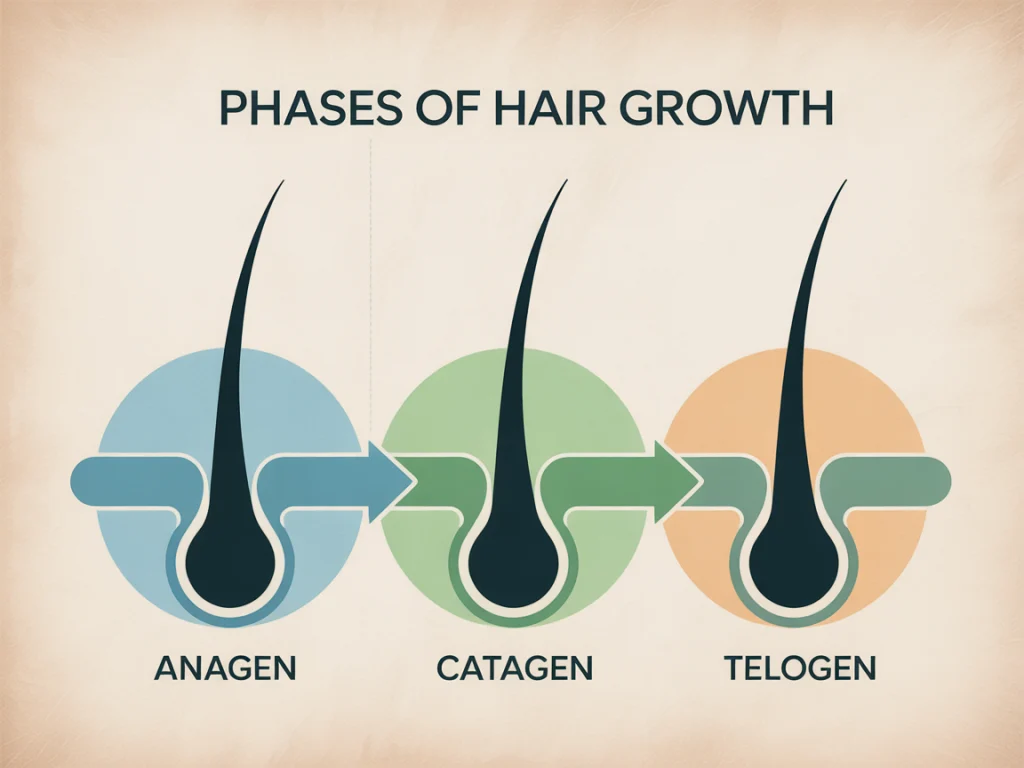
Daily Habits That Support The Growth Of Hair Naturally
Brushing and scalp massage routines
Have you heard a fact that 5 minutes of daily scalp massage can improve the quality of your hair drastically in time? A 2016 research revealed the effects of frequent scalp massage as a means of delivering more blood to the hair follicles hence more nutrition and oxygen to the follicles to promote growth.
For the best results, use slow circular movements towards the heart with fingertips, not nails, for 4-5 minutes before bed. Not only does this increase circulation, but it helps the distribution of your scalp’s natural oils along the hair shaft, protecting older growth from drying out and breaking.
When brushing use wide toothed wooden combs or boar bristle brushes which have less friction than their plastic counter parts. Always brush from the bottom up beginning from the ends, move upwards towards the roots so that there is minimum breakage.
Washing frequency and water temperature
Nailing down your optimal washing frequency is a balancing act. Over washing can remove natural oils, but if not washed enough then it can cause excess that leads to clogged follicles.
Washing of the hair two to three times a week would strike a balance for the majority of persons hair growth. This is however, dependent on your scalp type and level of activity as well as the type of environment that you live in. The key indicator? Your head should feel clean and not dry and tight.
Water temperature also plays a very important role than you could think. Hot showers are tantalizing but dries hair off natural oils and could irritate the scalp. Lukewarm water is the best for cleansing, with a cool final rinse to close the cuticle, to make shiny and control fizz.
Sleep, hydration, and stress reduction
Your best hair growth happens while you sleep. When in deep phases of sleep, body releases growth hormones that stimulates activity of the hair follicles. A good goal is 7-8 hours per night on a silk or satin pillowcase, which reduces friction and does not cause you to lose moisture.
Hydration affects every bodily function, including hair growth. When dehydrated, the body will not waste water for non-essential processes like hair growth, thereby leaving hair brittle. The minimum recommendation? Half your body weight in ounces of water daily.
Lastly, you should never neglect the effect of stress on your hair. Chronic stress exerts more hairs into the telogen phase. It is possible to see a visible effect through the use of stress-management techniques – whatever they may be: meditation, yoga or mere walks in nature.

The benefits of Hair in a good Hair routine:
- Stimulates blood circulation to the scalp
- Minimizes breakage and split ends
- Supports moisture retention and elasticity
- Reduces overall hair fall
Best Foods and Supplements for Hair Growth.
Growing long, healthy hair starts from within. For your hair follicles to give you strong, resilient strands that can grow to some lengths, they must have the right nutrient. Here’s what research shows works best: Biotin, Vitamin, Iron, and Omega-3s.
Although there are numerous biotin supplements promising the status of hair growth miracles, the reality is more complex. A biotin deficiency is not common but in cases where it occurs, it can undoubtedly impede on the growth of hair. The majority of people will benefit in terms of having more biotin in their diet than by increasing supplements rich in biotin.
Vitamin D deficiency, on the other hand, is very common and it is estimated to affect 42% of Americans. Low vitamin D is proven to have evident correlations to hair loss conditions such as telogen effluvium and alopecia.
Iron deficiency is the most undermined reason causing hair growth problems especially among women. As long as there is low iron content, your body cannot be in position to produce hemoglobin that is critical in facilitating the transportation of oxygen to hair follicles. Minor deficiencies can trigger a premature resting state in of follicles.
Omega-3 fatty acids help to diminish inflammation and provide the body with necessary fatty acids that maintain the scalp, provide hair with its natural shine, and elasticity.
Foods that are high in protein, zinc, and collagen.
Your hair composition is 95% protein (which is keratin ), so you cannot do without enough protein intake for growth. Americans get sufficient total protein but tend not to spread the intake optimally over the day for the optimum benefit to their hair.
The zinc is essential to the tissue growth and repair, including hair tissue. Studies reveal that supplements of zinc may help to enhance growth in individuals deficient of the mineral but food give a more balanced form of nutrition.
Collagen provides amino acids needed to build keratin. Although there are not many direct evidences for collagen supplements in association with hair growth, many consumers have reported better thickness and strength of the hair with regular use.
| Source Foods | Hair Growth Benefit |
|---|---|
| Eggs, almonds | Strengthens hair shaft |
| Spinach, red meat | Prevents shedding |
| Salmon, chia seeds | Adds shine and elasticity |
| Mushrooms, egg yolks | Stimulates follicles |
Hair grows from people’s scalps. However, it tends to grow more in some people compared to others. As such, you should know how to optimize its growth for your benefit. The following article highlights proven methods of increasing hair growth.
Wondered if the mere 5 minutes of scalp care a day can make your hair double in length after a year? Although results differ between individuals, these strategies, that are science-based, have uniformly positive effects in the majority of people.
- Scalp massage with rosemary or peppermint oil: It is shown in studies that rosemary oil is as effective as minoxidil (2%) for hair growth without side effects. Add 5-10 drops in a carrier oil and massage onto scalp 2-3 times a week.
- Weekly use of rice water rinse: This ancient beauty secret has inositol in it which penetrates ruined hair and fixes it inside out. Fermented water of rice shows even better benefits, because of higher content of antioxidants.
- Low-heat styling and air-drying: Damage to the protein structure of the hair by high heat results in breakage that does not allow for length retention. Experiment with “cool” option on blow dryer or better yet, air dry hair to 80% and finish off with low heat.
- Switching to a silk pillowcase: Cotton pillowcases cause friction that ruins the cuticles of hair resulting in breakage. From the textile studies, silk’s smooth surface can reduce this friction by 43% for enhanced length retention.
- Trimming split ends every 6–8 weeks: Although, trimming will not increase growth, it will prevent splits from moving up the shaft. Think of it as preventative maintenance – by removing 1/4 of an inch now, you will not lose inches to breakage later on.
Newest Methods of Hair Growth in 2025
Topical serums with peptides
The latest hair growth serums have gone beyond minoxidil and into the use of peptides that have direct communication with the hair follicles. These are smart compounds that send signals that can prolong anagen (growth) phase and enhance the quality of new hair.
Very promising are copper peptides as they not only stimulate hair growth but also promote hair diameter and strength. Based on clinical studies, hair fall is down by 35%, and density is increased, measurable after 90 days of continued use.
The modern formulations mix these peptides with the penetration enhancers based on natural sources, making it possible for the active ingredients to reach the follicle even more than ever before.
Laser caps and microcurrent therapy
During 2025, we have witnessed a significant advancement of the low-level laser therapy or LLLT, wherein home-based devices are now capable of delivering results in the same professional level degree. The latest laser caps have optimized wavelengths which target the optimal depth of the tissue for stimulation of follicles.
Similarly, microcurrent technology has adapted for scalp use. These devices provide minuscule electrical currents which mimic the natural electrical signals of the body pretty much waking up essentially dormant follicles and increasing the energy production in cells.
The combination method: the application of microcurrent therapy followed by LLLT, demonstrates especially good results in people with thinning hair, and research works report a growth of density by 29% even after 16 weeks.
Platelet-rich plasma (PRP) and mesotherapy
PRP therapy is one of the most effective ones for people who require professional interventions. This treatment takes advantage of the blood platelets from within, concentrated and injected directly in the scalp, to deliver growth factors directly to the hair follicles.
Newer protocols incorporate PRP with mesotherapy — micro injections of vitamins, minerals and amino acids for better outcome. This approach combines the stimulation (using growth factors) and nutrition (presence of essential nutrients) at the same time.
Although they are more intrusive compared to at-home alternatives, these treatments have wonderful 65-70% satisfaction rates among patients as the visible improvements tend to appear after 3-4 monthly sessions.
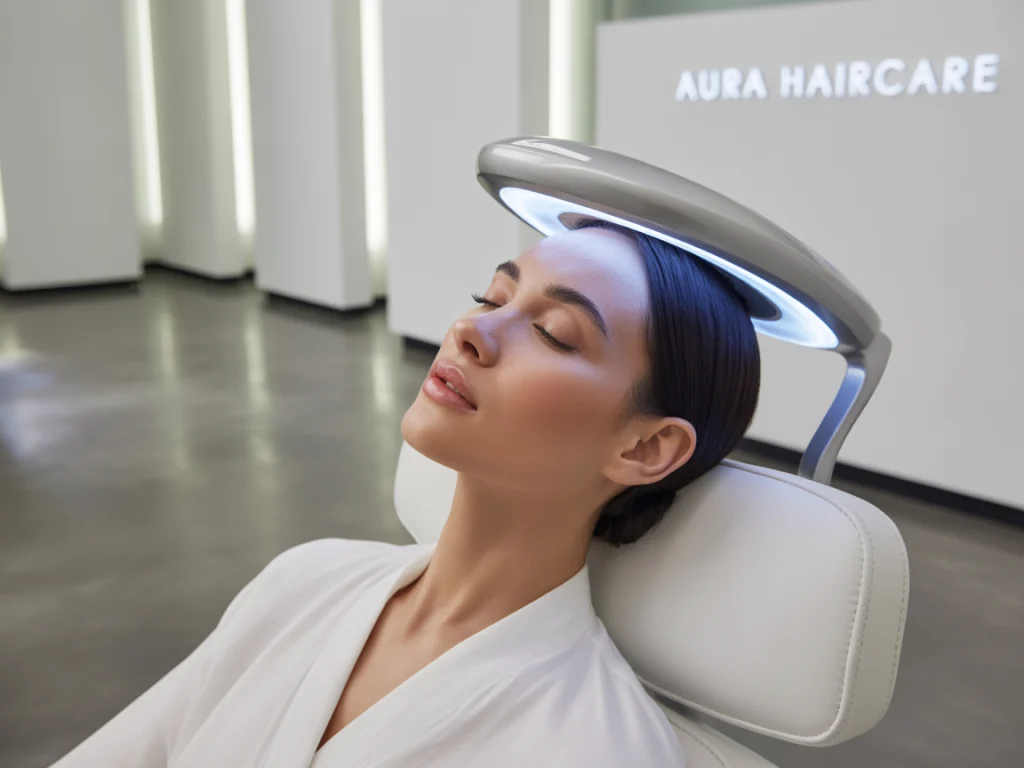
What Not to Do If You Need to Have Long Hair
Frequent bleaching and coloring
Chemical processing alters your hair’s structural composition, at the expense of its integrity more often than not. Bleach is quite destructive because it acts by oxidizing the hair’s natural pigment, traumatizing the hair and weakening structural bonds.
However, if you have to color your hair, you should opt for such options as balayage or highlights that require fewer root touch-ups. Also, new bond-building technologies which are introduced to the color treatments can assist in minimizing the harm inflicted upon the hair.
For the people who are serious about length, a color hiatus of 6 to 12 months can make a difference; a major difference in how quickly you achieve your goals.
Tight hairstyles and friction damage
Tightness of ponytails, buns, and braids exert force on the hair follicles in such a way that overtime can cause traction alopecia (hair loss which is brought about by pulling forces). Worse still, this damage can turn permanent if the process goes on for years.
Some of the most common ways of introducing friction are rough towel-drying, sleeping on cotton pillowcases, and using elastic hair ties with metal parts. All of these inflicts microscopic damage to the hair cuticle which averts on over a period of time.
The solution? Choose loose styles, microfiber towels, silk accessories, and fabric-covered elastics every time if possible. Your future length will thank you.
Over-shampooing and harsh ingredients
Much of the shampoos for sale contain sulfates and other detergents, which remove the natural protector of the hair. While doing this foamy work, they may also leave hair exposed to environmental stress and loss of moisture.
Particularly problematic ingredients include:
- Sodium Lauryl Sulfate (SLS) and Sodium Laureth Sulfate (SLES)
- Alcohols like ethanol and isopropyl alcohol (drying)
- Silicones that do not identify “water-soluble” (can accumulate over time);
- Synthetic fragrances (potential irritants for sensitive scalps)
The most appropriate way is the search for a gentle, sulfate-free shampoo and wash only when your scalp really requires it – not because you have got into a daily routine.
Can your hair products be doing more harm than good? Read this list against the ingredient list and you might want to switch to milder formulations when you find these troublesome ingredients.
Success Stories: Real People Who Transformed Their Hair
Case study 1: 1 year of natural growth with DIY methods
Say hello to Sarah 32 years old who has been fighting with stubborn shoulder-length hair that would not grow over the collarbone for years now. After taking them up on twice-weekly scalp massage with rosemary oil, weekly rice water rinses, and switching to heat-free styling, she had astonishing outcomes.
“The game-changer was consistency,” Sarah explains. I had done everything before, but never did I stick to anything long enough. Her hair after 12 months grew up to over 8 inches, way more than the average 6 inches most people get in a span of one year.
First of all, Sarah states the hair quality improvement: “It’s not just longer, it’s thicker and breaks less. Even my hairstylist asked what I’d been doing differently.”
Case study 2: Postpartum hair recovery with targeted nutrition
After birth of twins, Maya went through the dramatic peeling as many new mothers do. “I was losing handfuls every day,” she recalls. “My hairline had receded nearly an inch.”
Instead of the situation being considered a part of motherhood, Maya met a nutritionist and created a personalized plan on hair recovery. The focus: adequate protein at each meal, iron-loaded foods, and smart supplying of vitamin D and omega-3s.
Within three months, the shedding stopped completely. Around six months, she could see new growth in the hairline. Today, 18 months postpartum, she finds that her hair is thicker than it has ever been since – a victory she puts down to nutritional precision and her commitment to scalp care.
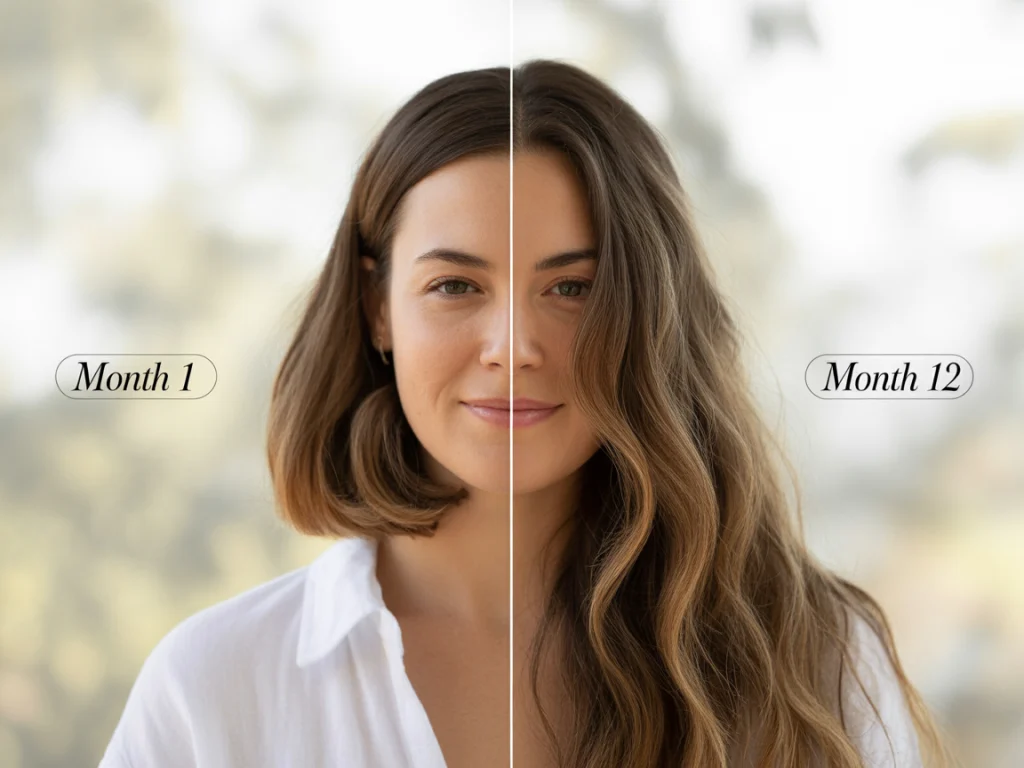
Recap: How to Get Long Hair in 2025
In order to gain really unbelievable hair length, you need a multi-dimensional approach. Here’s your actionable summary:
Be consistent with scalp care
Healthy hair starts with a healthy scalp. Include massage, correct cleaning, treatment that will promote the follicular environment in which hair takes a journey from.
Eat hair-friendly foods
Your body prioritizes vital organs when distributing nutrients. Make sure you are consuming sufficient amount of protein, iron and other basic building blocks that support “non-essential” hair growth.
Use proven treatments sparingly
High end treatments such as PRP and laser therapy can kick-start the process, but they support rather than substitute core care. Be selective and research thoroughly before investing.
Avoid habits that cause breakage
Length retention is as important as growth. Reduce damage by heat, chemicals and mechanical stress in order to maintain the hair you grow.
Which method are you excited to try first? Tell us in the comments!
Conclusion
The cultivation of hair will depend on obsessive routines and methods based on science – not miracle products and one-time fixes. Although genetics do affect one’s maximum possible length, the majority of individuals can drastically increase one’s results by implementing the fundamentals taught in this guide.
Nutrition and stress management are just as important as products, which is something that is ignored too often in place of hot new serums. Your hair is a reflection of your health in general, and hence what is good inside you is what shows outside.
New treatments can help—but basics still win. The most effective ones merge tried-and-true methods such as scalp massage or gentle work with tactical application of latest developments in the science of hair.
Have you applied any of these techniques or you have your very own favorite tips? Share below—we’d love to hear from you!
